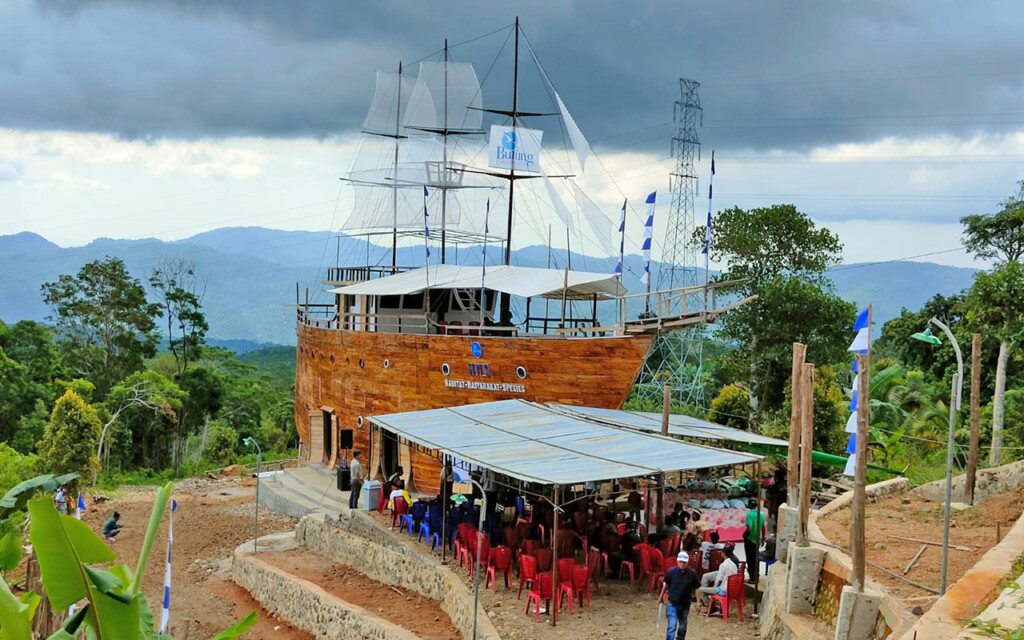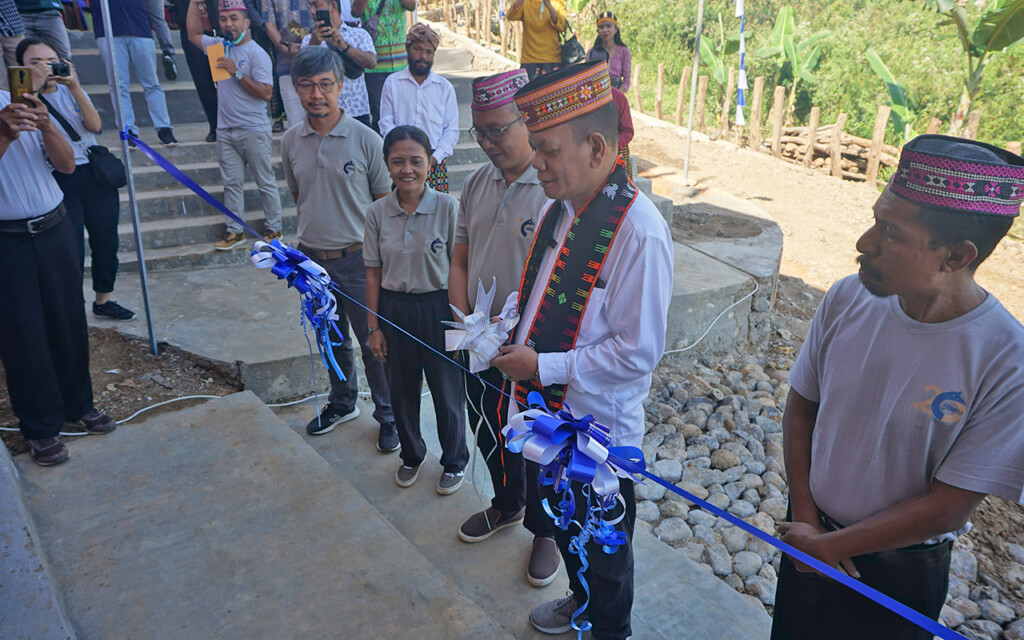
The Birdlife Indonesia Association (Burung Indonesia) has operated its site office in Saimbokol Hill at Cunca Lolos Village in Mbeliling District, West Manggarai Regency of East Nusa Tenggara Province, to which named as the Teras Flores. The inauguration ceremony was attended by the representative of West Manggarai Regent, Marten Ban, who served as Second Assistant to the Regent. The inauguration itself is a part of a series of event “Celebrating the Bird Diversity”, an annual event carried out by Burung Indonesia with the involvement of general public.
The Ecotone Rest Area (ERA), where the Teras Flores is located, is currently being developed into an integrated zone of rest area, information and learning center for conservation, nature tourism and community entrepreneurship development, covering an area of three hectares. The spot is sitting by the Trans Flores Road that connects the cities Labuan Bajo and Ruteng.
The Executive Director of Burung Indonesia, Dian Agista, explained at the inauguration event (17/6) that ERA was built with the intention to be an alternative tourism destination for the people of West Manggarai and its surroundings and travelers who visit Labuan Bajo. “In addition to Teras Flores, we also built a wood processing center in ERA, which was developed in collaboration between Burung Indonesia and the Mbeliling Landscape Multi-Venture Cooperation,” he added.

The three storeyed ship-shaped office, according to Agista, was built by a phinisi shipbuilder specialist from Bulukumba Regency, South Sulawesi Province. The construction process, which took eight months, required accuracy in determining the wood components used. “This ship has a height of 11 meters and a length of 34 meters. While the width reaches nine meters," he said.
The teak wood which was used to build this ship was sourced from Timber Verification and Legality System (TLAS) certified teak plantations owned by the community in the Mbeliling Landscape.
“The inauguration of the Teras Flores also marks the 15th anniversary of the Burung Indonesia program in the Mbeliling Landscape. Burung Indonesia affirms its commitment to continue working with the community in promoting sustainable development for an everlasting nature and prosperous society," said Agista.
The Mbeliling Landscape and Burung Indonesia at a glance
The Mbeliling Landscape, covering an area of 94.000 hectares, is one of Key Biodiversity Areas which existence is globally important. This landscape consists of a state forest area of 30,000 hectares and land outside forest areas including a 35,000 hectares of agroforestry areas, rice fields and villages. This area is an important habitat for both endemic and globally threatened flora and fauna, a home to four endemic birds to Flores namely the Flores Monarch (Symposiachrus sacerdotum), Flores Crow (Corvus florensis), Flores Hanging-parrot (Loriculus flosculus) and Flores Scops-owl (Otus alfredi). Seventeen endangered birds, two of them are the Critical Flores Hawk-eagle (Nisaetus floris) and Yellow-crested Cockatoo (Cacatua sulphurea), also inhabit the area.
In realizing the integrated management of Mbeliling Landscape, Burung Indonesia facilitated the establishment of a multistakeholder forum to ensure the mutually agreed landscape management principles can be implemented, named the Mbeliling Committee, which is responsible for coordinating and recommending programs and policy products.
The communities living in the villages in the Mbeliling Landscape are keys to the management of Mbeliling Landscape. Burung Indonesia also facilitated the establishment of the Forum Peduli Kawasan Mbeliling to represent the interests and aspirations of the Mbeliling community to other parties. The villagers were also encouraged to draft the Village Resources Management Agreement (VRMA), which will be used to regulate their livelihood sources. In total, 26 VRMAs, which were compiled by communities of respective villages and known by the regency governments, have been agreed upon by far. The drafting of Village Land-Use Plan in 10 villages has been facilitated as a follow-up action for the agreements.
“The inauguration of the Teras Flores also marks the 15th anniversary of the Burung Indonesia program in the Mbeliling Landscape. Burung Indonesia affirms its commitment to continue working with the community in promoting sustainable development for an everlasting nature and prosperous society.”
Dian Agista, Executive Director of Burung Indonesia
The Birdlife Indonesia Association, or more commonly known as Burung Indonesia, was established on 15 July 2002 as a membership-based national conservation organization which aims to conserve all bird species and their habitats in Indonesia, and work with communities to achieve sustainable development. Burung Indonesia is a member of the BirdLife International Global Partnership, consisting of conservation organizations in 118 countries.
In 1992-2002, this organization was known as the BirdLife International-Indonesia Programme with a focus on identifying Important Areas for Birds and Biodiversity (IBA) and developing various bird watching groups. During this period, some IBAs were successfully promoted to be protected areas. Burung Indonesia works through three approaches: conservation at the site level, sustainable management of productive landscapes and restoration of natural production forests. To date, the efforts to improve the effectiveness of protection area management are still being facilitated. However, creating a safe region for biodiversity while supporting community livelihoods is not as simple as developing its status to a protected area. Therefore, Burung Indonesia encouraged the natural forest production areas to be managed through ecosystem restoration.


